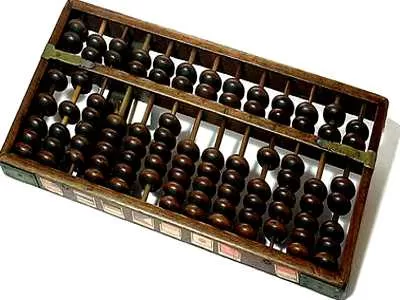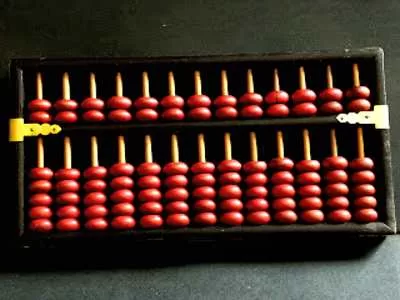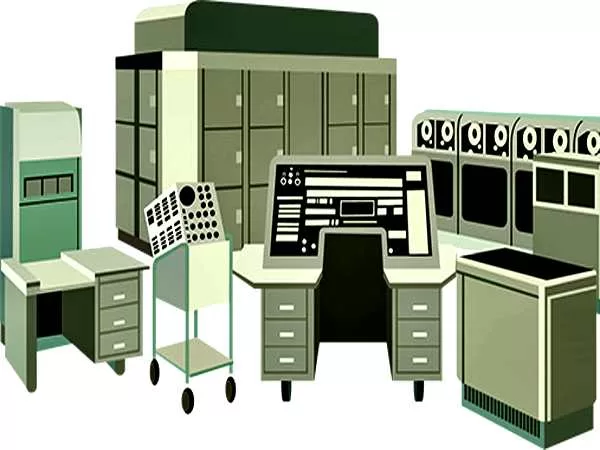While we’re waiting for the varnish on those shelves to dry, let’s take a dive into one of the oldest inventions in human history: the counting frame. Surprisingly, this simple tool paved the way for modern-day computers. Its relevance and adaptability even continue to astonish people today.
Let’s explore how something as simple as an abacus became one of the first “computers.”
Counting Frame: The First True Computer?
When we think about computers, sleek machines filled with circuits and processors come to mind. However, the humble counting frame can be argued as one of the first true computers. Why? It meets several criteria. Like a computer, it can be “programmed” to perform various tasks, is not limited to a single function, has a user interface, and can handle different data sets.
The most iconic example is the abacus, which has been used for millennia and still shows up in classrooms worldwide, particularly in nursery schools where kids first start learning about numbers. So, how did such a basic tool evolve into something that revolutionized how humans calculate and process information?
Abacus: Ancient Origins and Global Influence

The abacus gets its name from the Greek word abakos, which referred to a sand or dust-box used for counting or drawing geometrical figures. The Romans refined this into a tray of sand where they placed pebbles in grooves, calling these pebbles calculi—from which we derive the words “calculate” and “calculus.”
Imagine trying to multiply LVI (56) by XXIV (24) in Roman numerals without the aid of Arabic numbers—quite the challenge! Despite its flaws, Roman arithmetic was improved by the abacus, a far more intuitive tool for calculation.
Chinese Suanpan: An Ingenious Tool
Did the Chinese invent the abacus independently? Many historians believe so. The Chinese abacus, called the suanpan, was a revolutionary tool with at least 13 rods, each divided by a horizontal bar. It had two beads in the top section and five beads in the bottom section. This setup allowed users to perform not only decimal calculations but also hexadecimal (base-16) calculations—a versatile system that could handle more complex tasks.

Even more fascinating is how adept users of the suanpan were. Skilled operators could perform calculations faster than someone using a modern electronic calculator. They could easily manage addition, subtraction, multiplication, division, and even square and cube roots.
In Chinese culture, measurements also followed the base-16 system. For example, 16 liang made one jin—just as 16 ounces make one pound in the UK’s Imperial system.
Japanese Soroban and Russian Schoty
The suanpan isn’t the only version of the abacus. The Japanese developed their own variation known as the soroban, which simplified the design by having only one bead on the top section and four on the bottom. This made it slightly less versatile than the suanpan, but it was still widely used in Japan and is considered a hallmark of Japanese mathematics.
The Russian schoty features a single frame with ten beads per wire, and often includes a four-bead wire specifically for calculating quarters. Its design was particularly effective for merchants and traders, and it became an essential tool in everyday Russian life.
Napier’s Bones: An Early Calculating Device
While the abacus was spreading across Europe and Asia, John Napier, a Scottish mathematician, was busy inventing Napier’s Bones in 1617. These numbered rods allowed users to multiply and divide through a variation on the Arabic lattice method of calculation.
Napier was a man of many talents, dabbling in mathematics, physics, astronomy, and even astrology. He was in communication with the famous astronomer Tycho Brahe and carried an air of mysticism around him, often accompanied by his black cockerel, a pet that sparked rumors of occult practices.
One particularly clever story about Napier revolves around his use of the black cockerel to expose a thief. Napier told his servants that the cockerel would crow when touched by the guilty person. He had cleverly covered the bird’s feathers in soot, so when the innocent servants touched it, they got soot on their hands, while the guilty one, too afraid to touch it, was left with clean hands. A brilliant psychological trick!
Impact of These Tools
From the Roman abacus to Napier’s Bones, these early calculating devices laid the groundwork for modern computing. While the mechanics may have changed drastically over the centuries, the core principles of input, processing, and output remain the same. Today, we rely on advanced computers to perform incredibly complex calculations, but these ancient tools remind us that the desire to calculate, organize, and measure has been central to human progress for thousands of years.
Why Understanding Early Technology Matters
Understanding these historical tools gives us a greater appreciation for the technology we use today. Early calculating devices like the abacus or Napier’s Bones were milestones in human innovation, showing how creative problem-solving has always been a crucial part of our development.
As you look at that freshly varnished shelf and contemplate its completion, remember that even simple innovations can have a lasting impact on human history. The evolution from counting frames to modern computers is a testament to the ingenuity of humankind.

